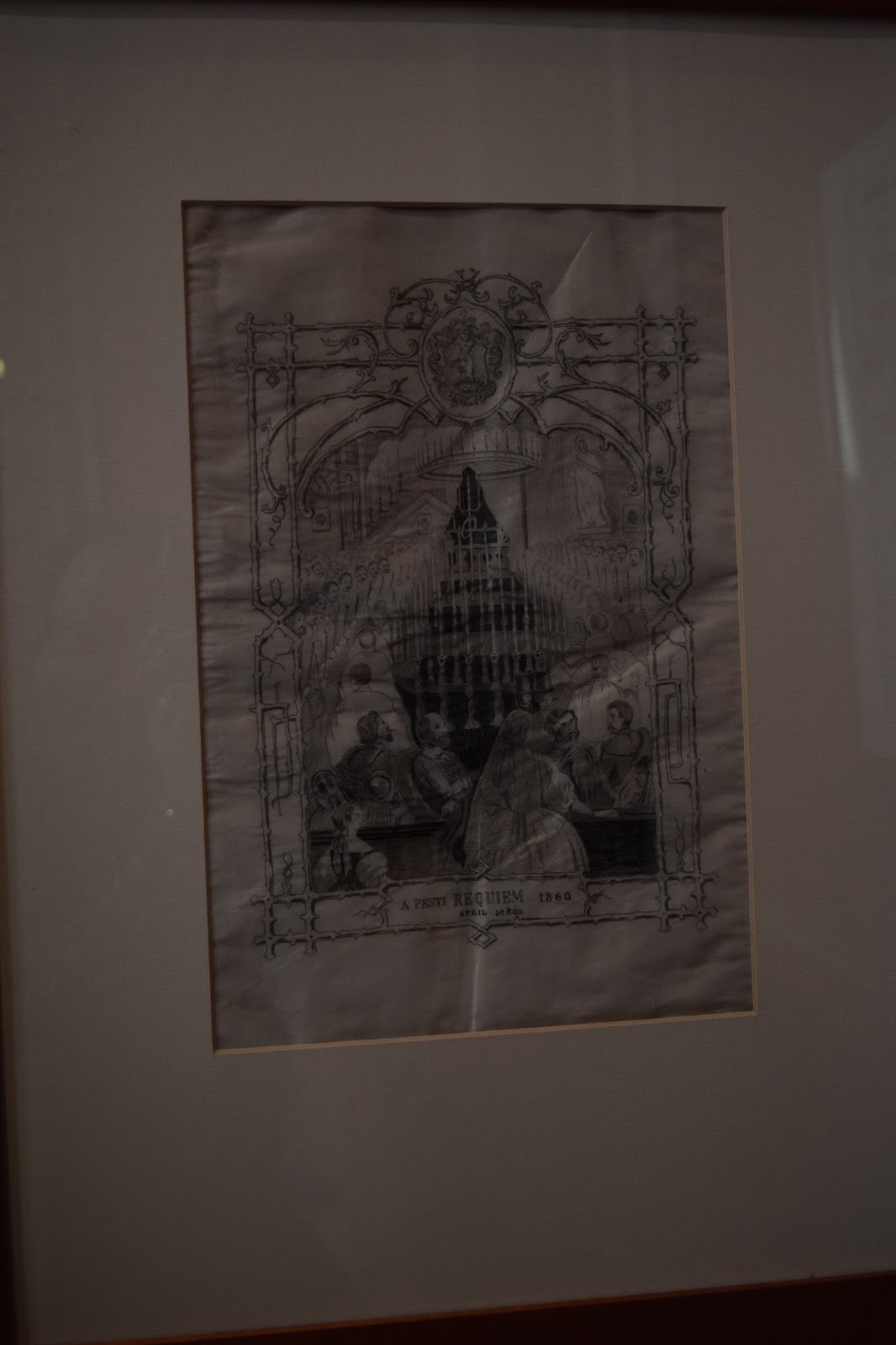Next we moved on to the fun part, the rare collections. These were amazing!!! Our group visited the Oriental collection first. The following pictures show publishing plates, ancient manuscripts, maps, dictionaries, and religious texts. Unfortunately we don't have pictures of every item we saw but these give a great summary. The script and artwork are amazing...plus they are several centuries old.
These pages are from the fourteenth century.
The Hungarian, Sándor Csoma de Kőrös, was the first person to write a English-Tibetan dictionary.
In another rare collection, we saw materials from the area in and around Hungary. These were some of my favorites. This first one is a piece of wood from the second century which was a receipt or contract.
This is artwork from a few centuries ago. You can see the Hungarian crown on the man's head.
This was a book from King Matyas' library (from the Renaissance times).
This is one page from the Gutenberg Bible. Someone decided to sell each page from the original! It was still neat to see though.
This was basically someone's autograph/memento book and this page has Isaac Newton!
This postcard (for lack of a better word) was made from tree bark when paper was too expensive and inaccessible during war time.
This book is an amazing artifact from the 17th century. No one knows what it is. It's all in a mysterious code.
After the rare book collections, we went to the art gallery where we saw paintings of famous Hungarians such as Deák Ferenc. The neatest pieces of art, in my opinion, were embroidered on silk. They were incredible! They look like a painting or a sketch from far away but up close you could see all of the individual threads.
Our trip to the Academy of Sciences was very special because we were able to see many artifacts which are not open to the public. Many of the rare books are not allowed to be studied because they are so fragile and valuable. You can see some of the digital collections of the library here. To finish the day, we ate a delicious four-course meal in the restaurant inside the Academy. Plus, we had beautiful views over the Danube. Our February event was definitely inspiring!

















Hi, Would it be possible to read the results of your research about Hidas Frigyes? Thank you! a hungarian musician
ReplyDelete